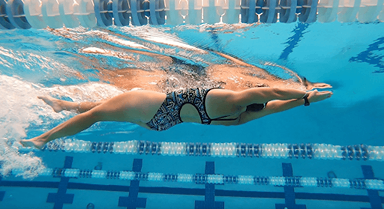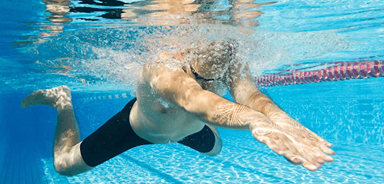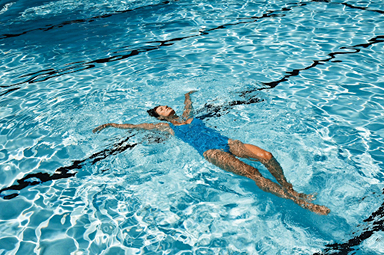Treading Swimming: Your Guide to Staying Safe and Efficient in the Water

When you think about swimming, your mind probably jumps straight to strokes like freestyle or breaststroke. But there’s another skill that’s just as important especially when safety is involved. Treading swimming is the ability to stay upright and afloat in deep water without moving forward.
It might not look as flashy as racing across the pool, but it’s a lifesaving skill that every swimmer should know. In this article, we’ll explore what the treading technique is, why it’s so important, how to do it effectively, and how to practice the right breathing patterns to make it feel effortless. Let’s check it out!
What Is Treading Swimming?
If you’re new to the idea of treading water, think of it as the skill that lets you stay in one place while keeping your head above the surface. Treading swimming is super useful because it helps you conserve energy, stay safe, and feel comfortable even in deep water.
Instead of floating on your back or constantly swimming forward, you use gentle leg and arm movements to keep yourself steady. There are different ways to do it, but with the right technique, anyone can learn how to tread efficiently and confidently — making deep water less intimidating and a lot more fun.
Why Is Treading Swimming Important?
Treading might look simple, but it’s actually one of the most valuable skills you can learn in the water. Let’s take a closer look at why treading swimming is so important:
A. Water Safety
Being able to tread means you can stay afloat without moving forward. Whether you’re in a pool, lake, or the sea, this simple skill can make all the difference in staying safe.
B. Fitness Benefits
Treading may look easy, but it actually works your muscles and keeps your body active. Engaging your arms, legs, and core makes it a great low-impact workout.
C. Energy Conservation
Unlike swimming back and forth, treading lets you stay in place while saving energy. It’s a smart way to rest without sinking.
D. Confidence Builder
For beginners or those afraid of deep water, treading is a great first step. You can practice staying afloat before learning full strokes, which helps reduce fear and boosts confidence.
How to Do Treading Techniques in Swimming
Now that you know why treading water is so important, let’s get into how to actually do it. There are several techniques you can try, from simple beginner moves to more advanced styles. You don’t have to master them all at once; just start with what feels comfortable and build up step by step.
1. Start Easy with the Dog Paddle

Begin with the dog paddle, one of the simplest ways to tread. Extend one arm forward, pull it back in toward your body, then switch to the other arm in a claw-like motion. At the same time, keep your toes pointed and kick your feet nonstop.
2. Use Your Feet with the Flutter Kick

Next, try using your feet as little propellers. Stretch your arms out for balance, then kick your legs back and forth quickly, toes pointed downward. One leg goes forward as the other kicks back. Then, just keep the rhythm going.
3. Save Energy with the Frog Kick

This one is great if you want to last longer. Start with your legs together, bend your knees, then push out in a whip-like motion before bringing your legs back in. Remember: point your toes when you kick out, flex them as you pull back.
4. Try Sculling with Just Your Hands

For sculling, stretch your arms out to the side under the water. With palms facing inward, sweep your hands toward each other, then turn them outward and push back. Keep your arms moving in a smooth, continuous rhythm.
5. Go Longer with the Eggbeater Kick

This advanced technique is called the “eggbeater” or “rotary kick.” Move one leg clockwise and the other counterclockwise, so as one leg pushes out, the other pulls in. When done right, it’s incredibly efficient.
6. The Little Helicopter for Kids

Finally, try the little helicopter. Lean back like you’re floating, then move your hands in a backward circular motion while kicking your feet up and down with pointed toes.
Practicing Breathing Patterns While Treading
Once you’re comfortable with the basic treading techniques, the next step is learning how to breathe properly while staying afloat. Good breathing patterns will help you stay calm, save energy, and last longer in the water. Here’s how to do it step by step:
A. Use All Four Limbs
Keep your body upright and move both your arms and legs to stay balanced. If you tilt your body horizontally, you’ll end up swimming forward instead of treading in place. Think of it as standing in the water while moving your limbs to hold your position.
B. Spread and Sweep Your Arms
Hold your arms out to the side and sweep them back and forth. Keep your palms facing the direction you’re pushing.
This motion keeps your upper body lifted and stable. Avoid moving your arms up and down too much as that will just make you bob like a buoy.
C. Keep Your Legs Moving
Your legs are just as important as your arms. Either pedal them in a circular, bicycle-like motion (keep your feet flexed) or kick back and forth with pointed toes. As long as your legs are moving, you’ll stay afloat.
D. Lift Your Chin and Breathe Normally
Keep your chin up and head slightly tilted back so your face stays above water. Try to breathe slowly and steadily. Remember to not gasp or rush your breaths. This helps you relax, conserve energy, and tread for longer.
E. Lean Back to Rest
Need a quick break? Angle your body slightly backward, almost like you’re half-floating, and gently paddle with your arms and legs. This way, you can conserve energy without fully stopping.
F. Use a Flotation Device If Needed
If you’re still struggling to stay up, grab something that floats—like a raft, paddle, or even a pool noodle. There’s no shame in using support while you’re building confidence and practicing your breathing.
Feel Safer Every Time You Swim!
Treading swimming may not look as flashy as a powerful freestyle sprint, but it’s one of the most valuable skills you can have in the water. From staying safe in deep pools to building strength and endurance, mastering treading will give you more control and confidence every time you swim.
Learning how to float in water and move with confidence is one of the most valuable skills anyone can have, whether it’s for safety, fitness, or pure enjoyment. At Rockstar Academy, part of the Sports & Performing Arts Academy, swimming is taught in a way that’s fun, structured, and effective for all ages.
Our swimming program also builds endurance, refine their techniques, and even get the chance to showcase their progress in exciting events like the RockOlympics.
If you’ve been thinking about boosting your water skills or giving your kids a head start in swimming, this is the perfect time—because Rockstar Academy offers a free trial class for every program!
FAQ
What is treading in swimming?
Treading in swimming is a technique used to stay afloat in one place by moving your arms and legs without swimming forward.
How to tread water when swimming?
Keep your body upright, move your arms side to side, and kick your legs in a steady motion to keep your head above the water.



